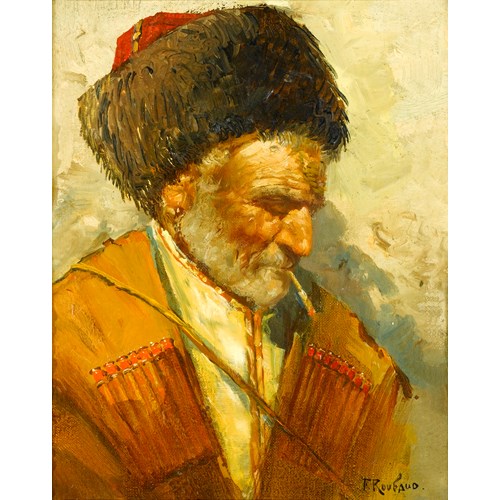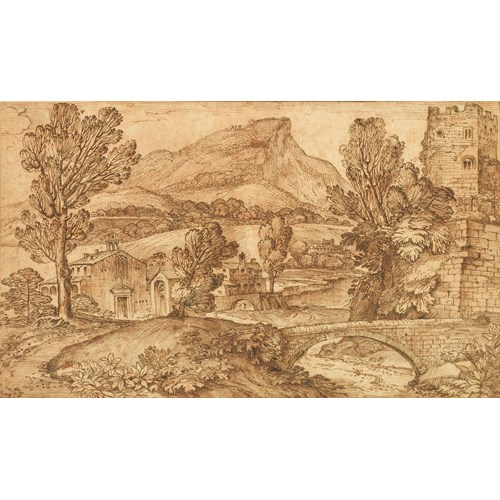Marketplace
The Flagellation
Sante Creara
The Flagellation
Period 1400-1600, 1600-1750, 16th Century, 17th century
Origin Italy
Medium Oil on slate
Dimension 29.5 x 24.2 cm (11⁵/₈ x 9¹/₂ inches)
Sante Creara’s rendition of The Flagellation shows his masterful handling of chiaroscuro. Central to the composition, Christ’s body radiates a crisp, white light while on either side of him, encased in darkness, two servants of Pontius Pilate administer the lashes. To the right a male figure wields a whipping device; the straps, caught mid-air, subtly catch the light emanating from the figure of Christ. Standing to the right of Christ another tormentor grips a bundle of birch sticks menacingly with both hands. At the foot of Christ a sensually dressed female figure, her left breast slightly exposed, kneels while holding a burning torch; apparently to provide light for the two floggers to carry out their violent task. In the bottom-right corner, the crown of thorns worn by Christ before his crucifixion is visible. Creara may have included this symbolic item to allude to the following scene in the Passion of Christ.
The Flagellation of Christ was a particularly popular iconography in sixteenth and seventeenth-century religious painting. As part of the Passion cycle, it depicts the moment when Christ, at the request of Pontius Pilate, is flogged before his crucifixion. Unusually, the present work does not depict Christ as being tied to a column during his ordeal, an item which is often included in artistic representations of this scene.
The subtle use of light within darkness by Creara shows clear links to the master of chiaroscuro, the contemporary artist Caravaggio (1571-1610), as well as to the work of Creara’s teacher, Felice Riccio (1542-1605), known as il Brusasorci. The use of chiaroscuro became a popular effect during the sixteenth century, in both Mannerist and in Baroque art. Artists such as Tintoretto and Veronese chose this effect to exaggerate and emphasise divine light radiating from reverential subjects, such as in The Flagellation. Dark subjects dramatically lit by a shaft of light from a single source was a compositional device developed by, amongst others, Caravaggio who was seminal in developing the style of tenebrism where dramatic chiaroscuro would become a dominant stylistic device.
The Flagellation of Christ was a particularly popular iconography in sixteenth and seventeenth-century religious painting. As part of the Passion cycle, it depicts the moment when Christ, at the request of Pontius Pilate, is flogged before his crucifixion. Unusually, the present work does not depict Christ as being tied to a column during his ordeal, an item which is often included in artistic representations of this scene.
The subtle use of light within darkness by Creara shows clear links to the master of chiaroscuro, the contemporary artist Caravaggio (1571-1610), as well as to the work of Creara’s teacher, Felice Riccio (1542-1605), known as il Brusasorci. The use of chiaroscuro became a popular effect during the sixteenth century, in both Mannerist and in Baroque art. Artists such as Tintoretto and Veronese chose this effect to exaggerate and emphasise divine light radiating from reverential subjects, such as in The Flagellation. Dark subjects dramatically lit by a shaft of light from a single source was a compositional device developed by, amongst others, Caravaggio who was seminal in developing the style of tenebrism where dramatic chiaroscuro would become a dominant stylistic device.
Period: 1400-1600, 1600-1750, 16th Century, 17th century
Origin: Italy
Medium: Oil on slate
Dimension: 29.5 x 24.2 cm (11⁵/₈ x 9¹/₂ inches)
Provenance: Private European Collection.
More artworks from the Gallery









